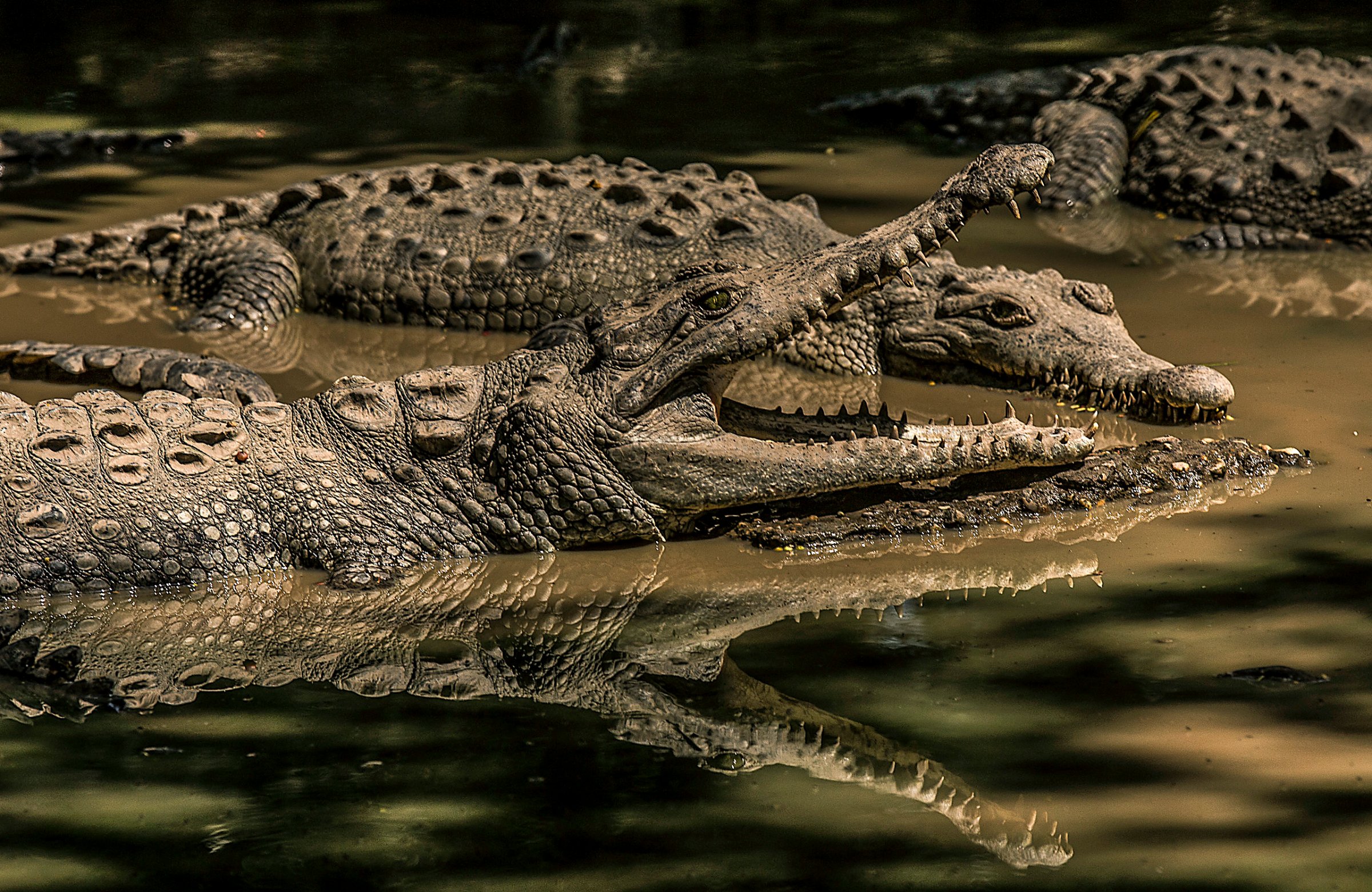
If you absolutely must go swimming with crocodiles—and this is not an activity we recommend—the time to do it was 13 million years ago and the place was South America. That’s because while the jaws of an extinct Amazon species known as Gryposuchus pachakamue were fearsomely well-developed, its eyes were only partway along, giving you a better chance of surviving your swim. And that, in turn, provides insight into the evolution not just of crocodiles, but of all species.
One of the defining features of the crocodile’s singularly unappealing face is its eyes, which are widely spaced and exceedingly protruding—or telescoped. That makes it a very stealthy hunter, able to cruise along just beneath the surface of the water with nothing but its nostrils and eyes showing. The question is how and when the trait appeared.
The crocodile group to which the Gryposuchus belonged was known as the gavialoid, and like modern crocodiles, they existed on both sides of the world—in South America and the Caribbean, and in India. The only surviving member of the group is the Indian gharial gavialoid.
That wide dispersal, at least long ago, raises a common evolutionary riddle: could a particularly cunning trait like telescoped eyes or, say, a cetacean’s blow hole have evolved separately, in parallel, as similar animals in different habitats responded to the same adaptive pressure with the same design solution? Or are the species somehow connected, with one great-granddaddy group developing the innovation and then dispersing around the world?
Parallel evolution is a lot more elegant and a lot more powerful, since it shows that adaptive brainstorms don’t have to be one-offs, but could happen again and again, in place after place, as new species emerge. And that, according to a new study just published in PLOS One, is exactly what happened with the gavialoid’s eyes.
The study, conducted by a team led by paleontologist Rodolfo Salas-Gismondi of the Institut des Sciences d l’Évolution at the University of Montpellier in France, was based on analysis of a 13 million-year-old Gryposuchus fossil unearthed in Peru. The investigators studied 206 different facial characteristics, from size of the head to length of the snout to width of the nostril to, significantly, telescoping of the eyes.
While a lot of the features were far along toward their modern appearance, the telescoping of the eyes wasn’t in much evidence. It was there—kind of—but the old Gryposuchus was clearly a version 1.0, still awaiting its full evolutionary upgrade. Meantime, on the other side of the world, the Indian relatives from the same era had gotten that memo and developed their eyes.
That had to mean parallel evolution, with the kinfolk in the Western Hemisphere simply getting started later. And that, in turn, is big news for anyone in the evolutionary biology world—and ought to be big news for anyone who has ever spared a thought for the extraordinary diversity of life on Earth. Evolution is a process with no end point, only a series of ingenious advances and solutions, endlessly changing over the past 3.5 billion years. It’s one more sign that even if our species, the most highly evolved in the history of the planet, ever tumbles into extinction, the march of life on Earth will continue—and continue to improve.
More Must-Reads from TIME
- Cybersecurity Experts Are Sounding the Alarm on DOGE
- Meet the 2025 Women of the Year
- The Harsh Truth About Disability Inclusion
- Why Do More Young Adults Have Cancer?
- Colman Domingo Leads With Radical Love
- How to Get Better at Doing Things Alone
- Michelle Zauner Stares Down the Darkness
Write to Jeffrey Kluger at jeffrey.kluger@time.com